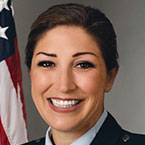By: Kaitlyn Mullin, MD & Renee Matos, MD, FAAP
A sick child can be stressful for any parent or loved one, but even more so when they require critical care. Children who require
critical care need more frequent monitoring, specific medications, or the support of equipment such as ventilators. However, not every hospital has the equipment or staff required to provide critical care for children, or specialized care that may be needed for your child's condition. That's why your child may need to transfer to a different hospital while getting critical care support along the way.
Reasons your child may need a pediatric intensive care unit (PICU) transfer
If your child is in a rural location and needs to travel far to the nearest pediatric intensive care unit (PICU), a doctor may recommend critical care transport. However, not all PICUs are the same, and some PICUs may have different resources than other PICUs.
Your child may need to be transferred to a PICU farther away for specialty critical care services such as:
continuous renal replacement therapy (specialized support for their kidneys)
extracorporeal membrane oxygenation or ECMO (specialized support for their heart and lungs)
organ transplant services
Are PICU hospital transfers done by ground ambulance or air?
Whether your child should be transported by ground ambulance or airlifted by helicopter or plane depends on:
how severe your child's condition is
which vehicles are readily available
weather conditions
the route's terrain by land
total transport time
Critical care air transport by plane or helicopter
Whether air transport is by plane or helicopter will be based on availability, resources, geography and weather.
Airplanes have higher speeds and can travel farther distances than helicopters. They're also safer during severe weather. However, a ground ambulance is usually needed to transfer between the hospital and plane on both ends of the trip. This raises total travel time and cost.
Helicopters, on the other hand, can land in small clearings or on top of hospitals. This avoids traffic congestion in urban areas, saving time for short distance transports. But helicopters may be grounded during severe weather conditions such as thunderstorms, hurricanes or heavy snowfall. Helicopters are also limited by the amount of fuel needed for longer distances.
Who are the members of a pediatric critical care air transport team?
Most frequently, pediatric critical care air
transport teams consist of pediatric critical care nurses and sometimes respiratory therapists. Depending upon the situation, a physician trained in pediatric critical care may also be a member of the team. Critical care air transport teams are extensively trained in how to care for your child.
How does transport by air affect the care provided?
Air turbulence can also make procedures, such as placing an IV or a breathing tube, more challenging. So, the team will stabilize your child as much as possible prior to transport.
Often, the cabin of the helicopter or plane can be either very cold or very warm. Flight teams are taught to do frequent temperature checks as part of their cares, always paying attention and providing close monitoring of the patient. Warm blankets or ice packs are used as needed.
Changes in altitude can also affect some medical conditions, so steps are taken to prevent complications. If your child has a pneumothorax (air in the chest outside the lung), for example, the team will monitor whether that air compresses the lung.
Medical air transport is loud and small, which makes it nearly impossible to hear heart or lung sounds or move around the patient. The transport team will rely more on other ways to observe vital signs such as blood pressure or oxygen levels and adjust care as needed.
Why might the military be involved in critical care air transport?
The military has its own critical care air transport teams (CCATT teams) that are trained and directed by the United States Air Force. These teams care for active-duty service members and their families; however, when civilians are injured in a wartime setting or when natural disasters or tragedies occur (such as Hurricane Katrina), the Department of State may request help from the military to help transport civilians.
While most CCATT teams receive extensive training in the care of critically ill adults, the Air Force also has teams specially trained to transport critically ill newborns or children. In the military, all critical care transport teams also include a physician in addition to a nurse and respiratory therapist.
Remember
If you have questions about how or why your child might be transported, do not hesitate to ask the physician caring for your child.
More information
About Dr. Mullin
 Kaitlyn Mullin, MD, is a second-year pediatric resident at Brooke Army Medical Center and a member of the American Academy of Pediatrics. She plans to pursue a fellowship in pediatric critical care. Kaitlyn Mullin, MD, is a second-year pediatric resident at Brooke Army Medical Center and a member of the American Academy of Pediatrics. She plans to pursue a fellowship in pediatric critical care.
|
About Dr. Matos
 Renee Matos, MD, FAAP, is a board-certified pediatric intensivist and the Chief of the Department of Pediatrics at Brooke Army Medical Center. She is also a critical care air transport physician in the United States Air Force. Dr. Matos is a member of the American Academy of Pediatrics Sections on Critical Care and Uniformed Services and the Councils on Children and Disasters and Quality Improvement and Patient Safety. Renee Matos, MD, FAAP, is a board-certified pediatric intensivist and the Chief of the Department of Pediatrics at Brooke Army Medical Center. She is also a critical care air transport physician in the United States Air Force. Dr. Matos is a member of the American Academy of Pediatrics Sections on Critical Care and Uniformed Services and the Councils on Children and Disasters and Quality Improvement and Patient Safety.
|
The views expressed herein are those of the author(s) and do not reflect the official policy or position of Brooke Army Medical Center, the Department of Defense, or any agencies under the U.S. Government.
Editor's note: Patrick Reeves, MD, FAAP, also contributed to this article.